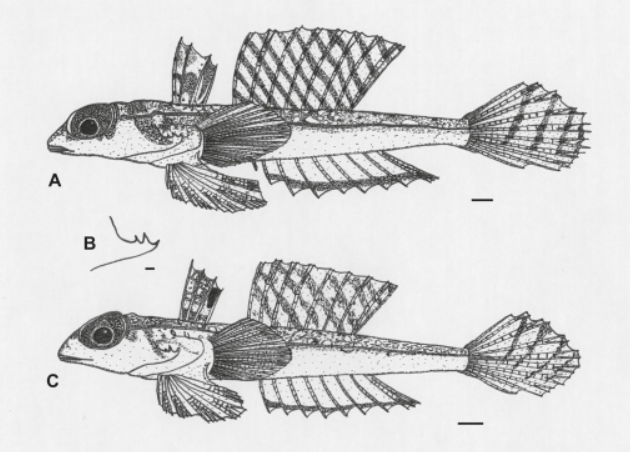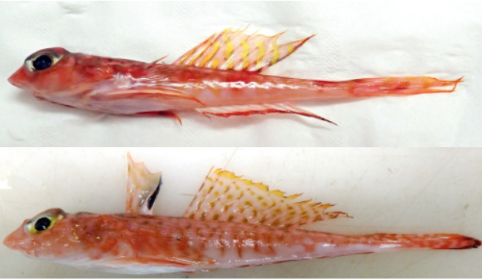A new species of dragonet has been described from the deep waters between Guinea Bissau and Angola. Named the Guinea Dragonet, the new species averaged 90mm in length and was described based on 15 specimens obtained from bottom trawls at 104 to 386m water depth. Work started as long ago as 1985 when Ronald Fricke noted that the tropical West African form of S. phaeton seemed different, but needed more material. Synchiropus flavistrigatus is described from additional specimens collected from Angola in 2003 and Bissau in 2019.

Etymology
Synchiropus flavistrigatus is named flavus (Latin) meaning yellow, and strigatus (Latin) meaning striped. The name of this species refers to the yellow bars on the second dorsal fin. It can be sexed like other dragonets by the male’s longer dorsal fin and larger fins in general. Both color photos featured here are female.
It differs from S.phaeton in fin ray counts and DNA. Based on the research by Ronald Fricke, Francesc Ordines, and Sergio Ramírez-Amaro, S. phaeton is now restricted to the waters of Northwest Africa and the Mediterranean Sea.
The Guinea Dragonet lives in similar habitats to S. phaeton, on deep sand or mud bottoms of the lower continental shelf and upper continental slope. Dragonets inhabit all temperate, tropical, and subtropical seas around the globe and can even be found in estuarine and fresh waters. As of 2022, there are now 201 species in the dragonet family Callionymidae.



